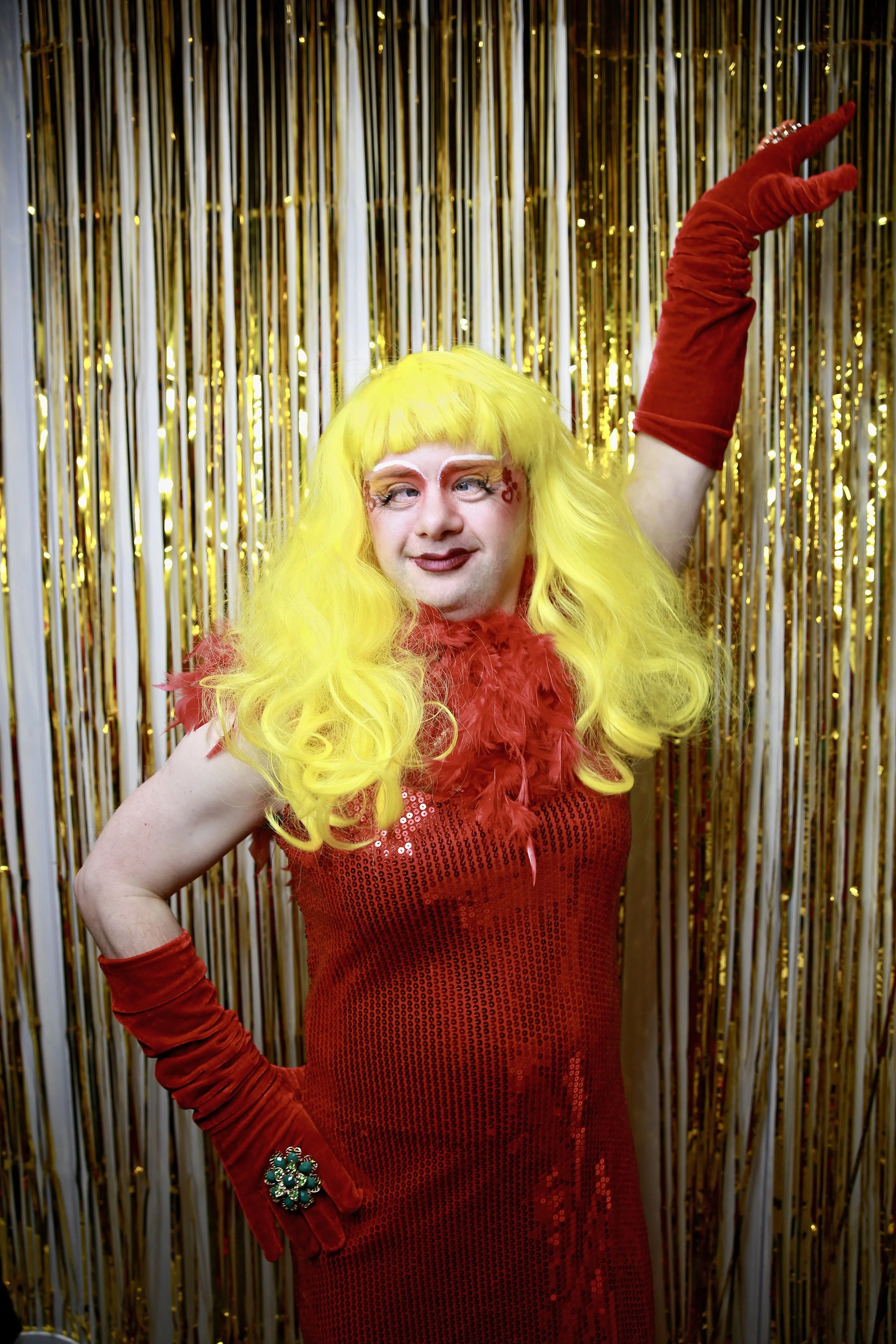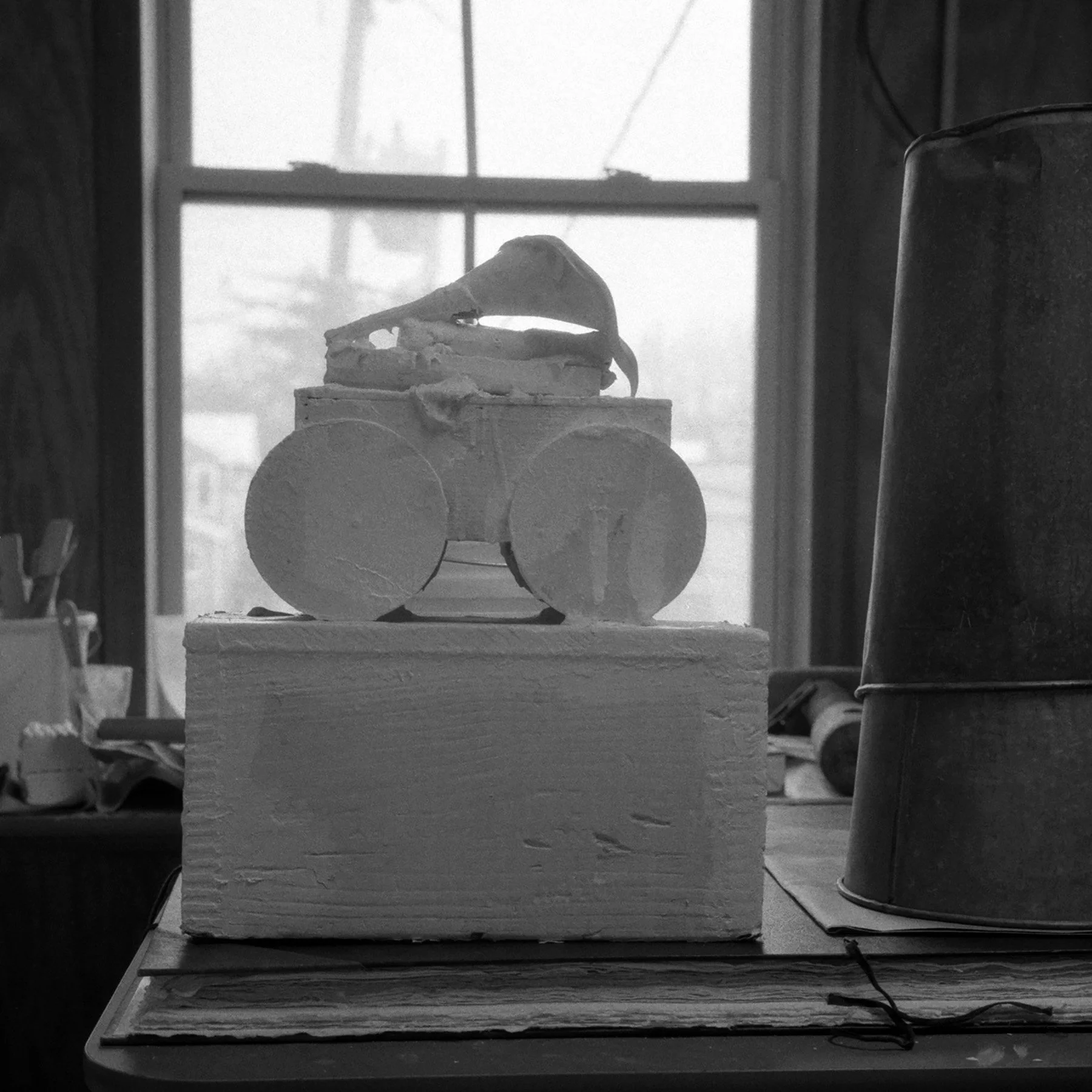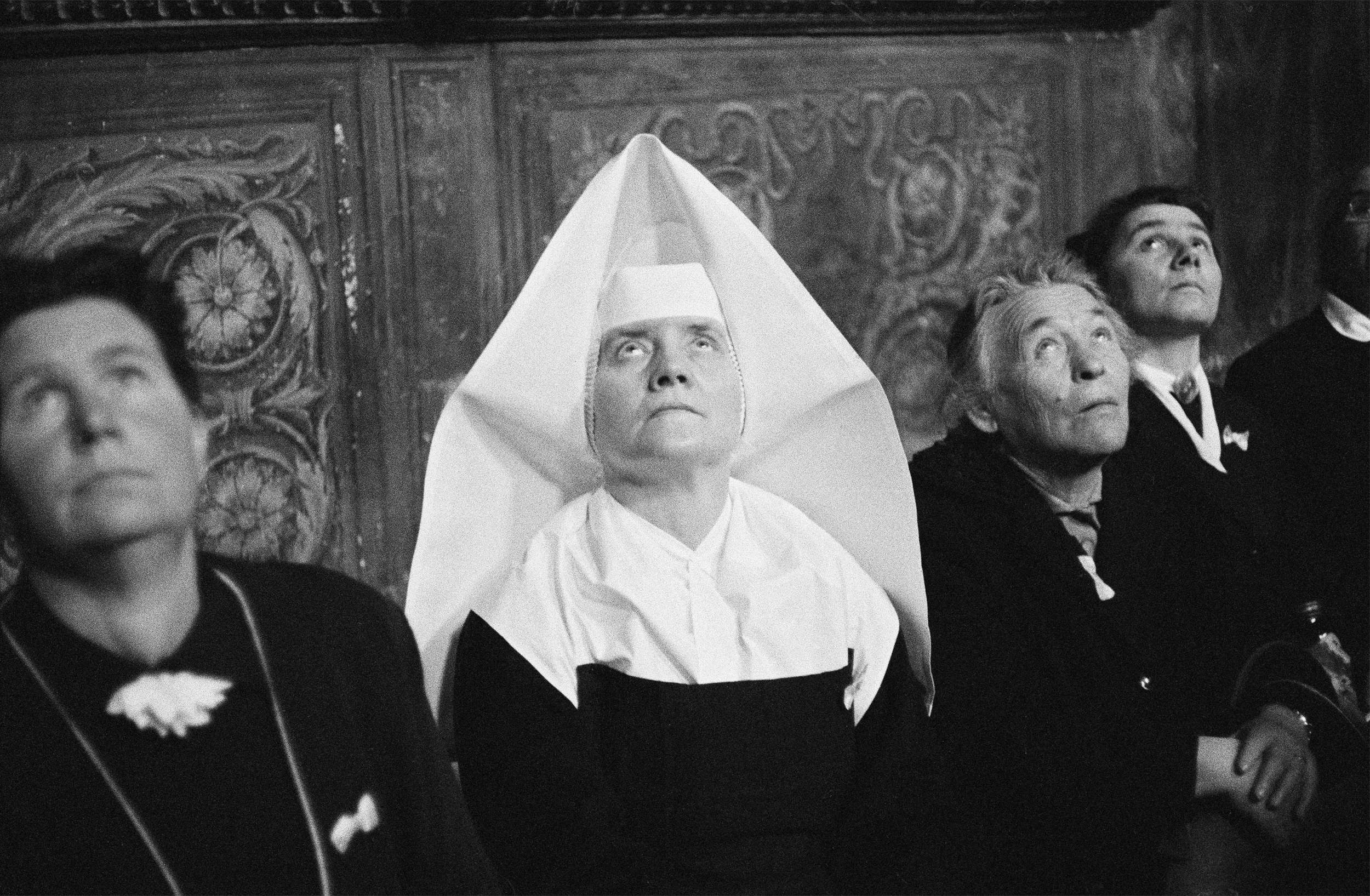
Mineriada - Anton Roland Laub | Haus am Kleistpark Projektraum | Berlin
Haus am Kleistpark Projektraum | Berlin
28. März – 1. Juni 2025
Mineriada
Anton Roland Laub
Die Ausstellung findet im Rahmen des EMOP Berlin – European Month of Photography statt.
© Anton Roland Laub, o.T., 1990, aus der Serie Mineriada 2014-2022, Polaroid, historisches Material, Privatarchiv, VG Bild-Kunst, Bonn
Mit seiner Ausstellung Mineriada begibt sich der Künstler Anton Roland Laub auf eine Reise in die Vergangenheit und taucht ein in das transgenerationale Traumata der rumänischen Gesellschaft nach dem Ende der Regierung Ceaușescu. Er thematisiert die gewaltsamen Unruhen von 1990, als tausende aufgehetzte regimetreue Bergarbeiter aus dem Jiu-Tal nach Bukarest gebracht wurden, um pro-europäische Proteste brutal niederzuschlagen.
Trotz eines Urteils des Europäischen Gerichtshofs für Menschenrechte von 2014 bleiben die tödlichen Übergriffe juristisch unaufgearbeitet – eine verdrängte Vergangenheit, der Laub in seinen Bildern nachspürt. In der rumänischen Presse wurde die Mineriade mit der Stürmung des Kapitols in den USA am 6. Januar 2021 verglichen. Mit seiner Arbeit sensibilisiert der Künstler für rekursive Konflikte in einer polarisierten Welt. Der Titel Mineriada ist ein sarkastisch verwendeter Begriff, der das rumänische Wort Bergarbeiter „Miner“ mit der Endung „-iada“ aus „Olimpiada“ kombiniert.
In einer Rückschau von Straßburg über Bukarest nach Petroșani untersucht Laub die Orte des damaligen Geschehens, das unausgesprochene Leid handgreiflicher Gewalt und dessen Spuren im kollektiven Gedächtnis. Ausgangspunkt sind Fotografien seines Vaters von Juni 1990, ergänzt durch eigene Recherchen, persönliche Erfahrungen und Erinnerungen. Primäres Ziel des Künstlers ist nicht die historische Aufarbeitung, sondern die Annäherung an die Thematik über die latente Präsenz des Geschehens im Unbewussten.
Eine der zentralen Arbeiten zeigt einen Blick nach vorne ins Dunkel. Zu sehen ist als einziges Element ein Spiegel, auf dessen Oberfläche Myriaden filigraner Wassertropfen schimmern, die das in ihm Abgebildete verzerren. Im Blick zurück, in der Spiegelung, ist ein Scheinwerfer zu erkennen, der sich von hinten zu nähern scheint. Ein kleines, viereckiges Element auf der Spiegelfläche bricht die rätselhafte Stimmung – als würde die Zeit zugleich vorwärts und rückwärts fließen. Was tritt aus dem Schatten der Nacht hervor?
Laub schafft Bilder von philosophischer Tiefe und poetischer Kraft. Seine Fotografien wirken durch ihre ästhetische Präzision und subtile Symbolik. Der Künstler öffnet Denkräume, ohne Antworten zu geben. Der Mythos von Saturn – dem Vater, der seine Kinder verschlingt, um nicht gestürzt zu werden – schwingt in seiner Auseinandersetzung mit. Eine weitere Fotografie zeigt eine verbogene Gitterstruktur, eine Metapher für Begrenzung und Durchlässigkeit zugleich. Dahinter fällt Licht durch ein engmaschiges, zusammengeflicktes dunkles Netz aus Kunststoff, eine Allegorie voller Ambivalenz.
Anton Roland Laub, in Bukarest geboren und aufgewachsen, lebt und arbeitet in Berlin. Er absolvierte ein Masterstudium an der Kunsthochschule Berlin Weißensee sowie zuvor ein Studium an der Neuen Schule für Fotografie in Berlin und ein Studium der Medienund Kommunikationswissenschaften an der Universität Bukarest. Nach Mobile Churches und Last Christmas (of Ceaușescu) legt Laub mit Mineriada den letzten Teil seiner Rumänien-Trilogie im Kehrer Verlag vor. Die Arbeit wurde durch das Recherchestipendium Bildende Kunst der Senatsverwaltung für Kultur und Europa, Berlin sowie durch die Publikationsförderung der Stiftung Kulturwerk, Bonn unterstützt.
© Anton Roland Laub/VG Bild-Kunst, Bonn, o.T., aus der Serie Mineriada, 2014-2022
Avec son exposition Mineriada, l'artiste Anton Roland Laub entreprend un voyage dans le passé et se plonge dans le traumatisme transgénérationnel de la société roumaine après la fin du gouvernement Ceaușescu. Il aborde les violentes émeutes de 1990, lorsque des milliers de mineurs excités et fidèles au régime ont été amenés de la vallée de Jiu à Bucarest pour réprimer brutalement les protestations pro-européennes.
Malgré un arrêt de la Cour européenne des droits de l'homme de 2014, ces agressions mortelles restent juridiquement non traitées - un passé refoulé que Laub retrace dans ses visuels. Dans la presse roumaine, la Mineriade a été comparée à la prise du Capitole aux Etats-Unis le 6 janvier 2021. Avec son travail, l'artiste sensibilise aux conflits récurrents dans un monde polarisé. Le titre Mineriada est un terme utilisé de manière sarcastique qui combine le mot roumain mineur « Miner » avec la terminaison « -iada » de « Olimpiada ».
Dans une rétrospective de Strasbourg à Petroșani en passant par Bucarest, Laub examine les lieux des événements de l'époque, la souffrance inexprimée de la violence manuelle et ses traces dans la mémoire collective. Les photographies de son père datant de juin 1990 constituent le point de départ, complétées par ses propres recherches, expériences personnelles et souvenirs. L'objectif premier de l'artiste n'est pas le traitement historique, mais l'approche de la thématique par la présence latente de l'événement dans l'inconscient.
L'une des œuvres centrales montre un regard vers l'avant, dans l'obscurité. Le seul élément visible est un miroir sur la surface duquel scintillent des myriades de gouttes d'eau en filigrane, qui déforment ce qui y est représenté. En regardant en arrière, dans le reflet, on aperçoit un projecteur qui semble s'approcher par derrière. Un petit élément carré sur la surface du miroir rompt l'ambiance énigmatique - comme si le temps s'écoulait à la fois en avant et en arrière. Qu'est-ce qui émerge de l'ombre de la nuit ?
Laub crée des visuels d'une profondeur philosophique et d'une force poétique. Ses photographies agissent par leur précision esthétique et leur symbolisme subtil. L'artiste ouvre des espaces de réflexion sans donner de réponses. Le mythe de Saturne - le père qui dévore ses enfants pour ne pas être renversé - résonne dans sa confrontation. Une autre photographie montre une structure grillagée tordue, une métaphore à la fois de la limitation et de la perméabilité. Derrière elle, la lumière passe à travers un filet sombre en plastique aux mailles serrées et rapiécées, une allégorie pleine d'ambivalence.
Anton Roland Laub, né et élevé à Bucarest, vit et travaille à Berlin. Il a obtenu un master à la Kunsthochschule Berlin Weißensee et a étudié auparavant à la Neue Schule für Fotografie de Berlin et à l'université de Bucarest en sciences des médias et de la communication. Après Mobile Churches et Last Christmas (of Ceaușescu), Laub présente Mineriada, le dernier volet de sa trilogie sur la Roumanie aux éditions Kehrer. Ce travail a été soutenu par la bourse de recherche en arts visuels du Senatsverwaltung für Kultur und Europa, Berlin, ainsi que par le soutien à la publication de la fondation Kulturwerk, Bonn.
© Anton Roland Laub/VG Bild-Kunst, Bonn, o.T., aus der Serie Mineriada, 2014-2022
Con la mostra Mineriada, l'artista Anton Roland Laub intraprende un viaggio nel passato e scava nel trauma transgenerazionale della società rumena dopo la fine del governo di Ceaușescu. L'autore affronta i violenti disordini del 1990, quando migliaia di minatori fedeli al regime furono portati dalla valle del Jiu a Bucarest per reprimere brutalmente le proteste pro-europee.
Nonostante una sentenza della Corte europea dei diritti dell'uomo del 2014, gli attacchi mortali rimangono giuridicamente irrisolti - un passato represso che Laub ripercorre nelle sue immagini. Nella stampa rumena, la Mineriade è stata paragonata all'assalto al Campidoglio negli Stati Uniti del 6 gennaio 2021. Con le sue opere, l'artista sensibilizza sui conflitti ricorrenti in un mondo polarizzato. Il titolo Mineriada è un termine sarcastico che combina la parola rumena minatore con il suffisso “-iada” di “Olimpiada”.
In una retrospettiva da Strasburgo a Petroșani, passando per Bucarest, Laub esamina i luoghi in cui si sono svolti gli eventi, la sofferenza inespressa della violenza tangibile e le sue tracce nella memoria collettiva. Il punto di partenza sono le fotografie scattate dal padre nel giugno 1990, integrate da ricerche personali, esperienze e ricordi. L'obiettivo primario dell'artista non è quello di fare i conti con la storia, ma di avvicinarsi al tema attraverso la presenza latente dell'evento nell'inconscio.
Una delle opere centrali mostra una vista in avanti nell'oscurità. L'unico elemento visibile è uno specchio, sulla cui superficie brillano miriadi di gocce d'acqua in filigrana, distorcendo ciò che vi è raffigurato. Guardando indietro, nel riflesso, si riconosce un riflettore che sembra avvicinarsi da dietro. Un piccolo elemento quadrato sulla superficie dello specchio rompe l'atmosfera enigmatica, come se il tempo scorresse in avanti e indietro allo stesso tempo. Cosa emerge dalle ombre della notte?
Laub crea immagini di profondità filosofica e forza poetica. Le sue fotografie sono efficaci grazie alla loro precisione estetica e al sottile simbolismo. L'artista apre spazi di riflessione senza fornire risposte. Il mito di Saturno - il padre che divora i suoi figli per non essere rovesciato - risuona nel suo lavoro. Un'altra fotografia mostra una struttura a griglia piegata, metafora di limitazione e permeabilità allo stesso tempo. Dietro di essa, la luce cade attraverso una rete scura di plastica, fitta e rattoppata, un'allegoria piena di ambivalenza.
Anton Roland Laub, nato e cresciuto a Bucarest, vive e lavora a Berlino. Ha conseguito un master presso la Kunsthochschule Berlin Weißensee e in precedenza ha studiato presso la Neue Schule für Fotografie di Berlino e Media and Communication Studies all'Università di Bucarest. Dopo Mobile Churches e Last Christmas (di Ceaușescu), Mineriada di Laub è la parte finale della sua trilogia sulla Romania, pubblicata da Kehrer Verlag. L'opera è stata sostenuta dalla borsa di studio per la ricerca sulle arti visive del Dipartimento per la cultura e l'Europa del Senato, a Berlino, e da un finanziamento per la pubblicazione da parte della Stiftung Kulturwerk, a Bonn.
© Anton Roland Laub/VG Bild-Kunst, Bonn, o.T., aus der Serie Mineriada, 2014-2022
In his exhibition Mineriada, artist Anton Roland Laub takes a journey into the past and delves into the transgenerational trauma of Romanian society after the fall of the Ceaușescu government. He addresses the violent riots of 1990, when thousands of incited miners loyal to the regime were brought from the Jiu Valley to Bucharest to brutally crush pro-European protests.
Despite a 2014 ruling by the European Court of Human Rights, the fatal assaults have not been legally addressed – a repressed past that Laub traces in his visuals. In the Romanian press, the mineriad was compared to the storming of the Capitol in the United States on 6 January 2021. With his work, the artist raises awareness of recursive conflicts in a polarised world. The title Mineriada is a sarcastically used term that combines the Romanian word for miner, ‘Miner’, with the suffix ‘-iada’ from ‘Olimpiada’.
In a retrospective journey from Strasbourg via Bucharest to Petroșani, Laub examines the places where the events took place, the unspoken suffering of physical violence and its traces in the collective memory. The starting point is his father's photographs from June 1990, supplemented by his own research, personal experiences and memories. The artist's primary goal is not historical reappraisal, but rather an approach to the subject through the latent presence of the event in the unconscious.
One of the central works shows a view into the darkness. The only element visible is a mirror, on the surface of which myriad filigree water droplets shimmer, distorting what is reflected in it. Looking back, a spotlight can be seen in the reflection, seemingly approaching from behind. A small, square element on the mirror surface breaks the enigmatic mood – as if time were flowing both forward and backward at the same time. What emerges from the shadows of the night?
Laub creates visuals of philosophical depth and poetic power. His photographs are effective due to their aesthetic precision and subtle symbolism. The artist opens up spaces for thought without providing answers. The myth of Saturn – the father who devours his children to avoid being overthrown – resonates in his examination of the subject. Another photograph shows a warped lattice structure, a metaphor for both limitation and permeability. Behind it, light falls through a narrow-meshed, patched dark net of plastic, an allegory full of ambivalence.
Anton Roland Laub, born and raised in Bucharest, lives and works in Berlin. He completed a master's degree at the Berlin Weissensee School of Art, having previously studied at the Neue Schule für Fotografie in Berlin and media and communication studies at the University of Bucharest. After Mobile Churches and Last Christmas (of Ceaușescu), Laub presents Mineriada, the final part of his trilogy on Romania, published by Kehrer Verlag. The work was supported by the Visual Arts Research Grant of the Senate Department for Culture and Europe, Berlin, and the publication grant of the Kulturwerk Foundation, Bonn.
(Text: Haus am Kleistpark, Berlin)






























































































